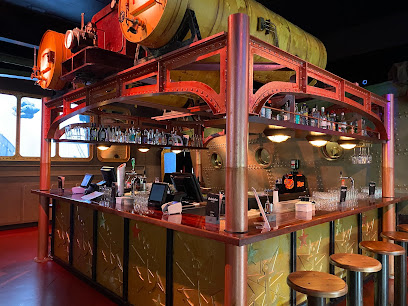
Friedrichstraße 205: A Glimpse into Divided Berlin
Step back in time at Friedrichstraße 205 and experience divided Berlin through an immersive 360° panorama, supplemented by personal stories and historical insights, in the heart of Berlin's iconic street.
Friedrichstraße 205 houses the Asisi Panorama Berlin, an immersive 360° experience depicting life in the shadow of the Berlin Wall during the 1980s. Created by artist Yadegar Asisi, the panorama offers a poignant glimpse into the divided city, contrasting the vibrant, alternative culture of West Berlin's Kreuzberg with the stark, controlled environment of East Berlin. Supplemented by a photo exhibition featuring personal snapshots from the era, the panorama provides a powerful and thought-provoking reflection on a pivotal period in Berlin's history. It's a must-see for those seeking a deeper understanding of the Cold War and its impact on the city and its people. The location serves as a stark reminder of Berlin's complex past, offering a unique perspective beyond the typical tourist trail.
A brief summary to Friedrichstraße 205
- Friedrichstraße 205, Berlin, Mitte, 10117, DE
Local tips
- Allow ample time to fully absorb the panorama and the accompanying photo exhibition for a more impactful experience.
- Combine your visit with a walk along Friedrichstraße to explore its historical landmarks, shopping destinations, and cultural attractions.
- Consider visiting Checkpoint Charlie and the Tränenpalast nearby to further deepen your understanding of Berlin's Cold War history.
- Check the Asisi Panorama Berlin website for current opening hours and any special events or exhibitions.
- Take advantage of the audio guides available to enhance your understanding of the panorama and its historical context.
Getting There
-
Public Transport
The easiest way to reach Friedrichstraße 205 is by public transport. Take the U6 subway line to Kochstraße/Checkpoint Charlie station, which is directly adjacent to the Asisi Panorama. Alternatively, the S-Bahn lines S2, S5, S7, S25, and S75 also stop at Kochstraße/Checkpoint Charlie. A short ride on the 245 bus will also get you there. A single ticket for public transport within Berlin (AB zone) costs €3.50.
-
Taxi/Ride-Share
A taxi or ride-share from central Berlin to Friedrichstraße 205 will typically cost between €8 and €15, depending on the distance and traffic conditions. Be sure to specify 'Friedrichstraße 205' as your destination.
-
Driving
If driving, be aware that parking in the immediate vicinity of Friedrichstraße 205 is limited and can be expensive. Several parking garages are located nearby, including the Parkhaus Spreekarree (Friedrichstraße 134-136) and the parking garage at the Hotel Aquino (Hannoversche Straße 5b). Hourly parking rates typically range from €3 to €5, with daily rates around €18.
Discover more about Friedrichstraße 205
Iconic landmarks you can’t miss
Friedrichstraße 205
0.0 km
Discover the architectural beauty and cultural vibrancy of Friedrichstraße 205, a historic landmark in the heart of Berlin's Mitte district.
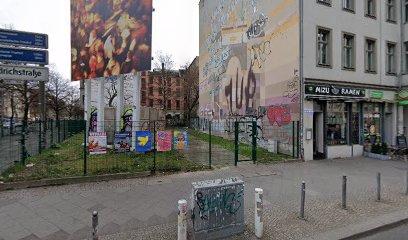
Friedrichstraße 107
0.3 km
Explore Friedrichstraße 107, a stunning architectural gem in Berlin's Mitte, embodying the city's rich history and vibrant modern culture.
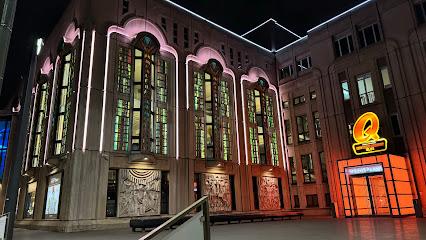
Oranienburger Str. 36
0.4 km
Discover the historic Oranienburger Str. 36, a symbol of Berlin's rich history and vibrant culture, nestled in the heart of the city's Mitte district.
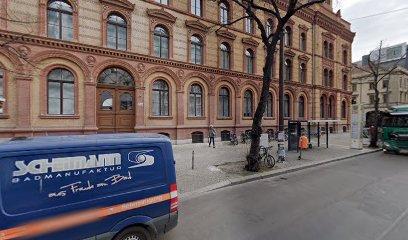
Oranienburger Str.
0.5 km
Experience Berlin's vibrant heart on Oranienburger Straße: a captivating blend of history, culture, and nightlife in the city's Mitte district, offering an unforgettable urban adventure.
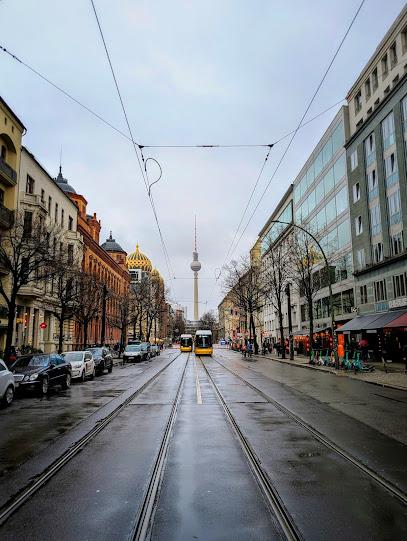
Mündung Südpanke
0.6 km
Discover the tranquil Mündung Südpanke in Berlin's Mitte, where urban renewal meets natural beauty, offering a peaceful escape along the revitalized Südpanke River.
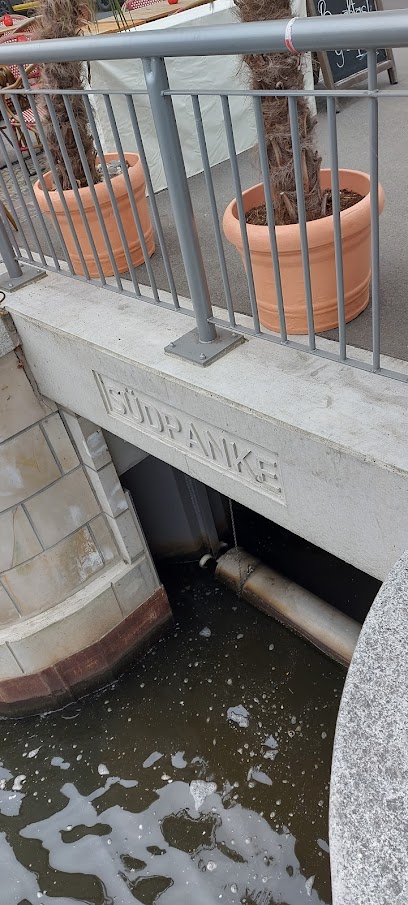
Elisabeth-Schwarzhaupt-Platz 3
0.6 km
Experience the serene beauty of Elisabeth-Schwarzhaupt-Platz, a tranquil urban oasis in the heart of Berlin, perfect for relaxation and leisure.
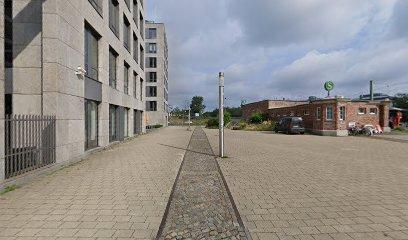
Invalidenstraße 10
0.7 km
Explore Invalidenstraße 10, a historical gem in Berlin's Mitte district, showcasing the city's rich architectural heritage and vibrant cultural scene.
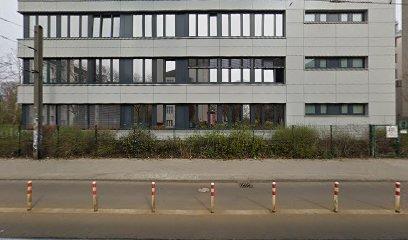
Albrecht von Graefe
0.7 km
Explore the Albrecht von Graefe sculpture in Berlin, a tribute to medical innovation and artistic mastery in the heart of the city.
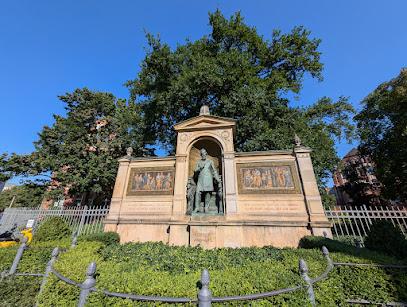
Rudolf Virchow Monument
0.7 km
Discover the Rudolf Virchow Monument in Berlin, a historical tribute that celebrates the legacy of a visionary in medicine and social reform amidst the city's vibrant culture.
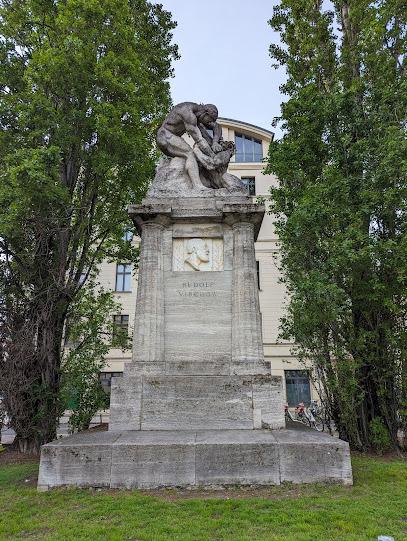
Schiffbauerdamm
0.8 km
Discover the cultural heart of Berlin at Schiffbauerdamm, where history meets vibrant entertainment and stunning waterfront views.
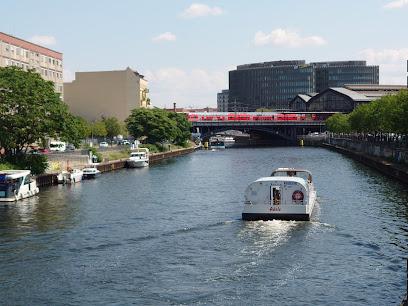
Memorial Jewish Cemetery
0.9 km
Discover the Memorial Jewish Cemetery in Berlin—a tranquil haven of history, reflection, and remembrance of the city's vibrant Jewish culture.

Berlin Wall Memorial
0.9 km
Explore the Berlin Wall Memorial, a poignant reminder of history where you can reflect on the past and learn about the journey to reunification.
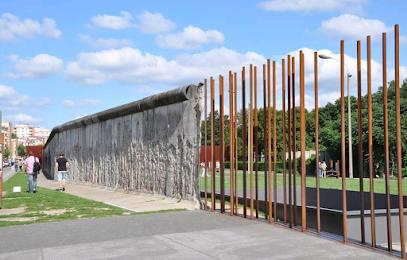
Sandkrugbrücke
0.9 km
Explore the picturesque Sandkrugbrücke in Berlin's Mitte district, a charming bridge offering stunning views and a glimpse into the city's rich history.
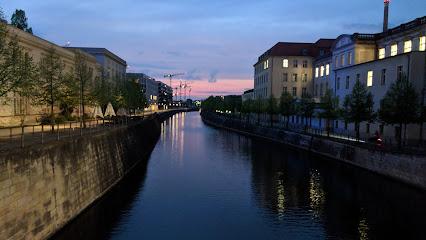
Parlament der Bäume
0.9 km
A poignant Berlin memorial created on the former border strip, blending nature and art to remember the Wall's victims and promote peace, located along the historic Schiffbauerdamm.
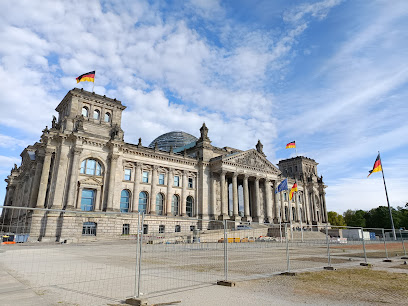
Alexanderufer
0.9 km
Discover the beauty and tranquility of Alexanderufer in Berlin, a perfect blend of history, culture, and stunning riverside views.

Unmissable attractions to see
Friedrichstadt-Palast
0.3 km
Discover the magic of Friedrichstadt-Palast, Berlin's premier performing arts venue, renowned for its spectacular shows and vibrant cultural atmosphere.
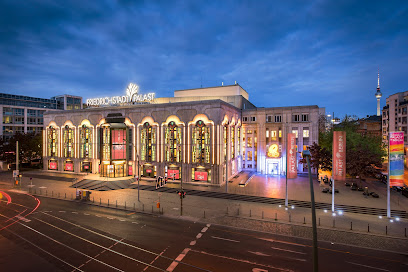
Spreefahrten Berlin
0.4 km
Experience Berlin's breathtaking views and rich history on a relaxing boat tour with Spreefahrten Berlin, your gateway to the city's waterways.
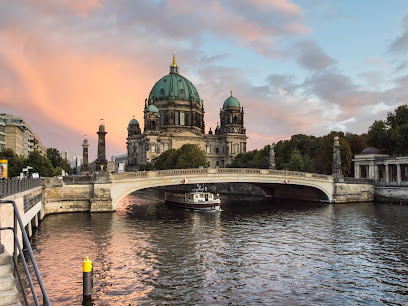
ehemaliges Kaiserliches Postfuhramt
0.4 km
Explore the Ehemaliges Kaiserliches Postfuhramt, a historic postal depot revealing Berlin's architectural beauty and rich history.

Boros Foundation
0.4 km
Explore the Boros Foundation in Berlin, where contemporary art meets history in a converted WWII bunker, showcasing a stunning collection of modern masterpieces.

Boulevard Friedrichstrasse
0.4 km
Experience authentic German cuisine in the heart of Berlin at Boulevard Friedrichstrasse, where traditional flavors meet contemporary dining.

Veterinary Anatomy Theater
0.5 km
Explore the Veterinary Anatomy Theater in Berlin, a historical gem showcasing the fascinating world of veterinary science and animal anatomy.
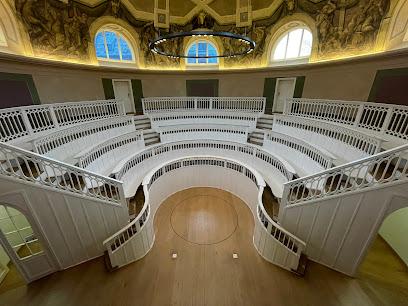
Heckmann-Höfe
0.5 km
Experience the charm of Heckmann-Höfe, a historical landmark in Berlin offering art, dining, and unique shopping in a picturesque setting.

Deutsches Theater
0.5 km
Experience the magic of live theater at Deutsches Theater in Berlin, where captivating performances come to life in an iconic setting.
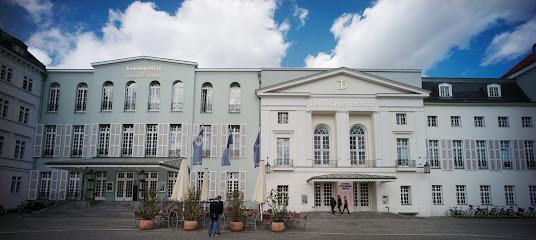
Sachsenhausen Tour Berlin Concentration Camp Memorial Tour
0.5 km
Discover the profound history of Sachsenhausen Concentration Camp Memorial in Berlin, a vital reflection on human rights and remembrance.

New Synagogue Berlin - Centrum Judaicum
0.5 km
Explore the New Synagogue Berlin, a beautiful fusion of history, culture, and architecture, celebrating Jewish heritage in the heart of the city.

KW Institute for Contemporary Art
0.5 km
Explore the KW Institute for Contemporary Art in Berlin for cutting-edge exhibitions and a vibrant experience at the heart of contemporary creativity.
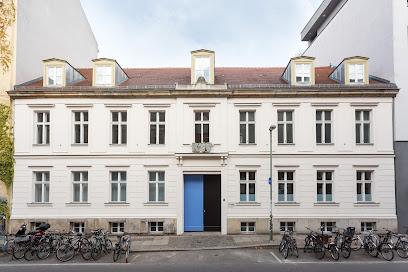
Samurai Museum Berlin
0.5 km
Explore the rich heritage of samurai culture at the Samurai Museum Berlin, showcasing exquisite artifacts and insightful exhibits in the heart of the city.
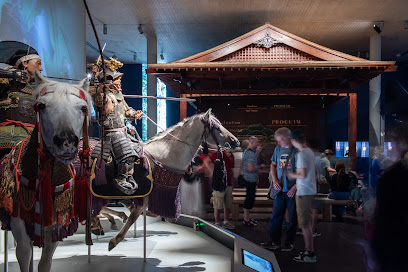
Jewish Community of Berlin
0.5 km
Explore the rich history and cultural significance of the Jewish Community of Berlin, a cornerstone of the city's vibrant heritage.
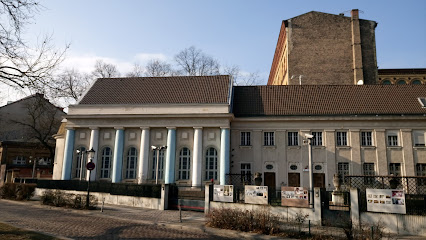
Weidendammer Brücke
0.5 km
Discover the scenic Weidendammer Brücke, a stunning bridge in Berlin that offers breathtaking views and a rich historical backdrop for every tourist.
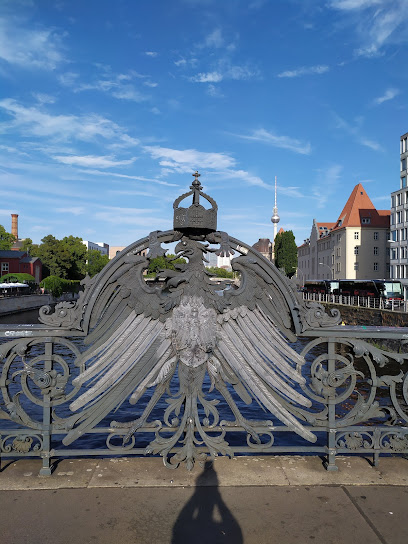
Berliner Ensemble
0.5 km
Discover the Berliner Ensemble, a historic performing arts theater in Berlin, celebrating the legacy of Bertolt Brecht through innovative and powerful performances.

Essential places to dine
Pantry
0.1 km
Discover an eclectic dining experience at Pantry in Berlin - where fusion cuisine meets elegance in the heart of Mitte.
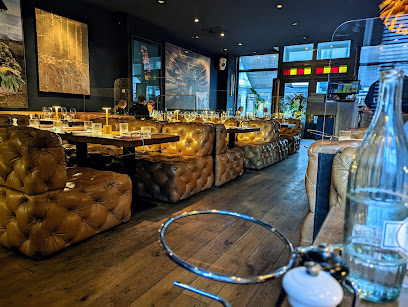
Schnitzelei Mitte
0.2 km
Experience authentic German cuisine at Schnitzelei Mitte, featuring exquisite schnitzels and tapas in Berlin's lively Mitte district.
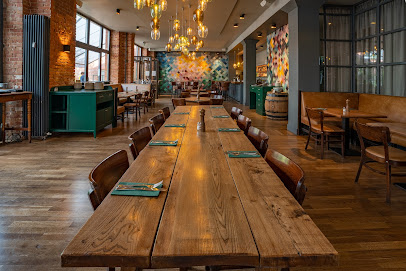
Friedel Richter Restaurant
0.3 km
Experience modern German cuisine at Friedel Richter Restaurant in Berlin's Mitte district – where tradition meets innovation.
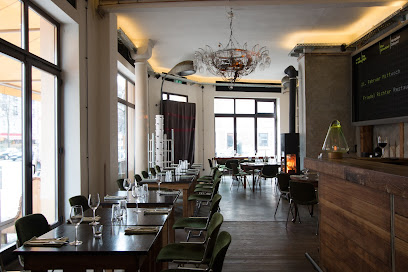
acht&dreissig
0.3 km
Savor traditional German dishes at acht&dreissig in Berlin, where authentic flavors meet inviting ambiance.
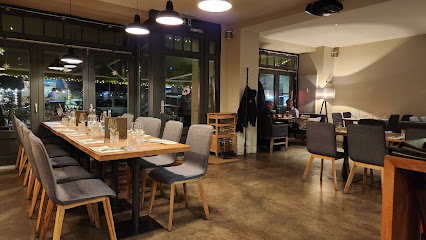
MontRaw Restaurant
0.4 km
Experience authentic Mediterranean cuisine in Berlin's Mitte district at MontRaw Restaurant - where every dish tells a story.
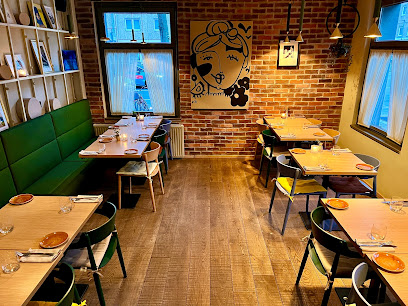
Salamat
0.5 km
Discover authentic Middle Eastern flavors at Salamat in Berlin's Mitte district – where every dish tells a story.
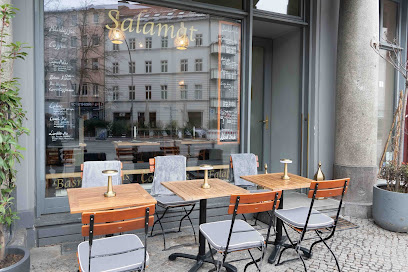
Grill Royal
0.5 km
Experience exceptional steaks and vibrant ambiance at Grill Royal in Berlin’s Mitte district.
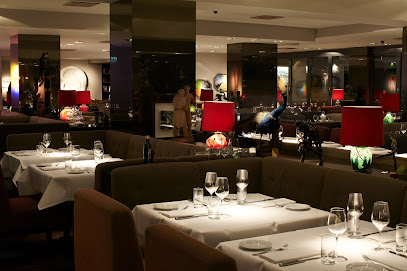
Bandol sur mer
0.6 km
Experience the exquisite flavors and breathtaking scenery of Bandol sur Mer on your next visit to the French Riviera.
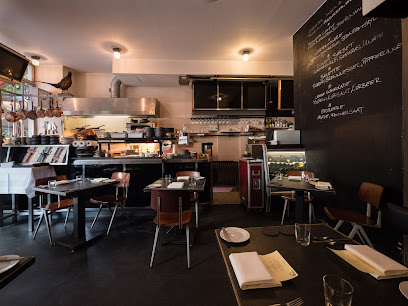
Berliner Republik
0.6 km
Discover Berliner Republik: A Culinary Haven in Berlin's Mitte District Offering Authentic German Cuisine and Lively Atmosphere.
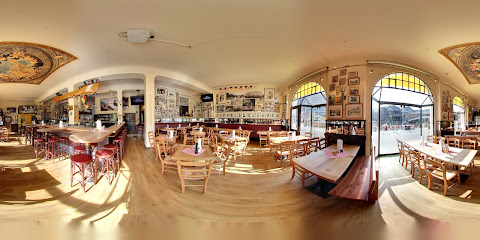
Katz Orange
0.7 km
Discover Katz Orange: An eclectic fine dining experience in Berlin's Mitte district offering exquisite German cuisine and an inviting atmosphere.
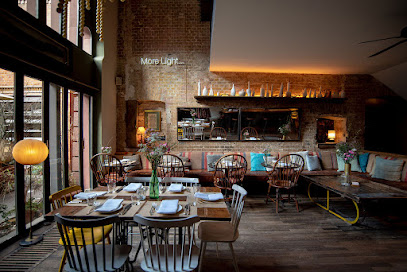
Restaurant Dae Mon
0.9 km
Discover an exquisite fusion of modern European cuisine at Restaurant Dae Mon in Berlin's vibrant Mitte district.

Nante-Eck
1.1 km
Experience authentic German cuisine at Nante-Eck in Berlin’s Mitte district—where tradition meets taste in a cozy atmosphere.

Hackethal's
1.2 km
Discover Hackethal's: A German restaurant and pub in Berlin offering traditional cuisine in a cozy setting.
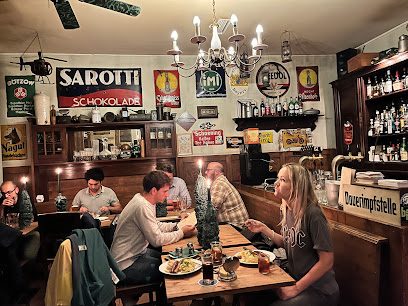
PeterPaul
1.2 km
Discover contemporary German cuisine at PeterPaul in Berlin's Mitte district – where tradition meets innovation in every bite.
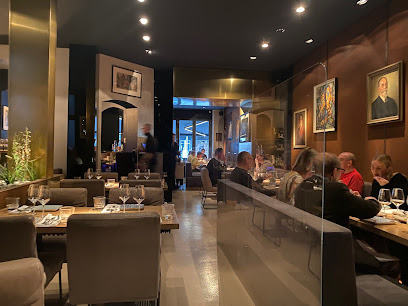
Bocca di Bacco
1.3 km
Experience authentic Italian cuisine at Bocca di Bacco in Berlin – where tradition meets elegance in every dish.
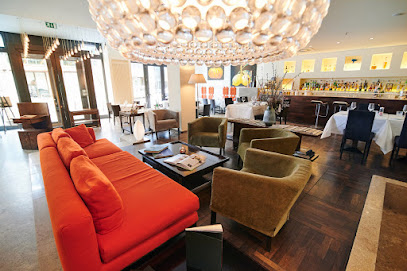
Markets, malls and hidden boutiques
Fashionfouvintage
0.8 km
Explore Fashionfouvintage in Berlin for a unique vintage clothing experience, showcasing timeless styles from various eras that inspire and delight.

AMPELMANN shop in the Hackescher Markt
0.9 km
Explore the charming AMPELMANN shop in Hackescher Markt for unique Berlin souvenirs that capture the city's spirit and culture.
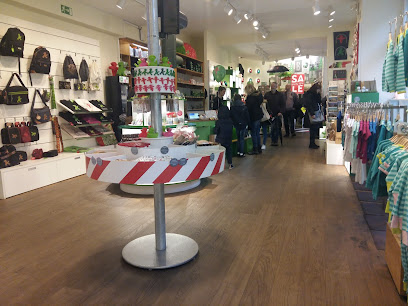
Hackesche Höfe
1.1 km
Explore Hackesche Höfe, a vibrant shopping and cultural hub in Berlin, featuring unique shops, diverse dining options, and artistic experiences.
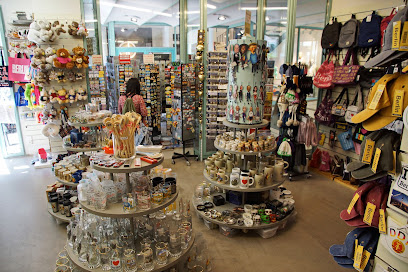
Rotation Boutique / Nachhaltige Mode / Schallplatten
1.1 km
Discover the intersection of sustainable fashion and music at Rotation Boutique in Berlin's Mitte district, where style meets eco-consciousness.

Kauf Dich Glücklich Mode
1.1 km
Discover unique fashion at Kauf Dich Glücklich Mode, a stylish clothing store in Berlin's Mitte district, where creativity meets contemporary style.

A Kind of Guise Store
1.1 km
Explore A Kind of Guise Store in Berlin for unique, high-quality clothing that blends contemporary style with sustainable practices.
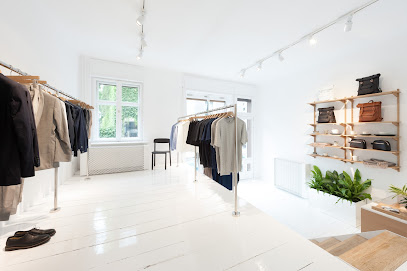
BERLIN STORE
1.2 km
Discover unique souvenirs and local crafts at the Berlin Store, the perfect stop for tourists seeking a piece of the city's vibrant culture.
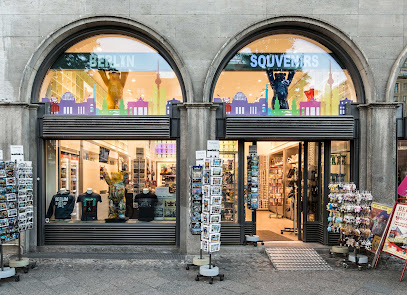
RAU Berlin Boutique
1.2 km
Explore the unique fashion offerings at RAU Berlin Boutique, the perfect blend of contemporary style and local craftsmanship in the heart of Berlin.
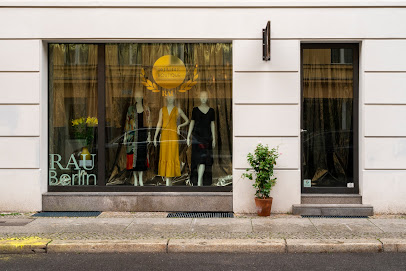
Quadrat Shop Polish Designers and FRIENDS
1.2 km
Explore Quadrat Shop in Berlin for exclusive Polish designer collections that blend tradition with modern fashion trends.
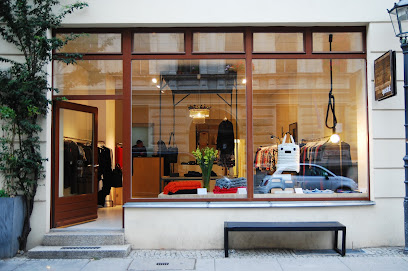
Fête de la Boutique
1.2 km
Discover unique women's fashion and accessories at Fête de la Boutique in Berlin's vibrant Mitte district, where style meets individuality.
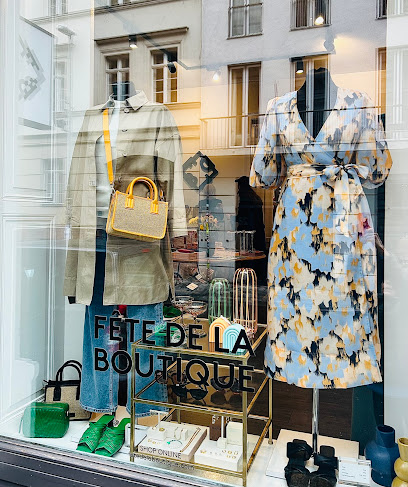
Pick'nWeight - Vintage Kilo Store
1.3 km
Explore the vintage fashion paradise of Berlin at Pick'nWeight - Vintage Kilo Store, where unique styles meet sustainable shopping.

The New Black
1.3 km
Explore unique vintage fashion at The New Black in Berlin's Mitte district, where sustainability meets style in an eclectic clothing experience.

The Square Berlin East
1.4 km
Explore a unique blend of fashion, literature, and home decor at The Square Berlin East, a boutique gem in the heart of Berlin's Mitte district.
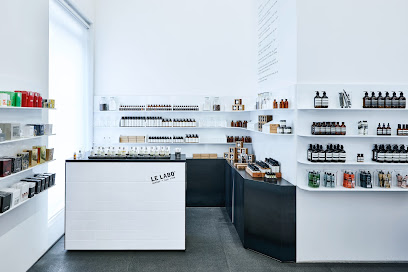
Redbear Berlin
1.4 km
Explore Redbear Berlin, a stylish boutique offering unique fashion pieces in the vibrant Mitte district, perfect for discerning shoppers.
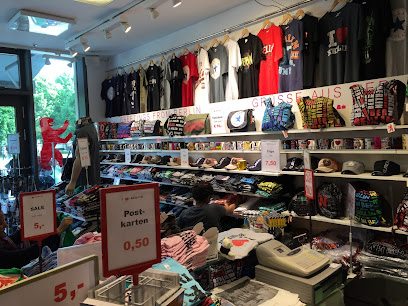
REBECCA Concept Store
1.4 km
Explore the vibrant fashion scene at REBECCA Concept Store in Berlin, where unique style meets contemporary design.
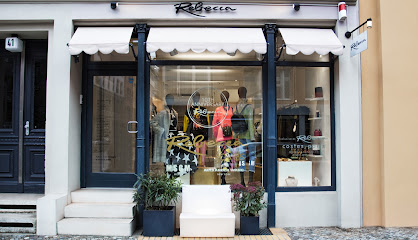
Essential bars & hidden hideouts
Melody Nelson bar
0.1 km
Discover the vibrant atmosphere of Melody Nelson, Berlin's chic bistro and cocktail bar, perfect for unwinding and socializing.
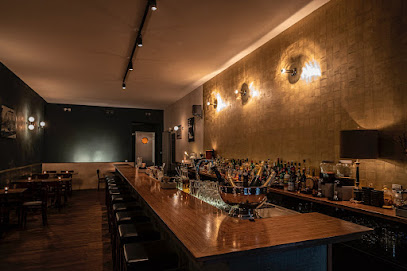
Reingold
0.2 km
Experience the vibrant nightlife of Berlin at Reingold, a cocktail bar in Mitte known for its expertly crafted drinks and lively atmosphere.
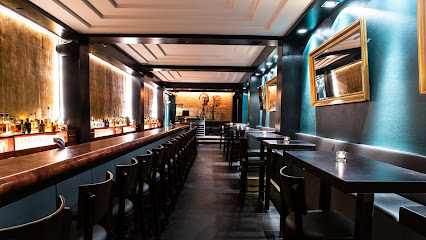
Bar Amélie
0.3 km
Discover Berlin's vibrant cocktail scene at Bar Amélie, where expertly crafted drinks meet a cozy atmosphere in the heart of the city.
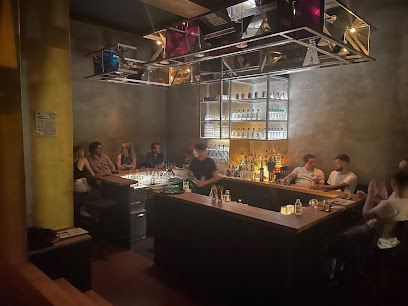
X-Terrain
0.3 km
Discover the eclectic vibe of X-Terrain, a unique bar in Berlin's Mitte with creative cocktails and a lively atmosphere perfect for nightlife enthusiasts.

meisterschueler
0.5 km
Discover Meisterschueler in Berlin – a captivating cocktail bar that intertwines art and mixology for an unforgettable experience.
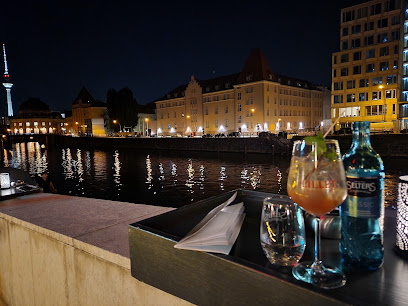
My Bar ICI
0.7 km
Discover the vibrant atmosphere and exquisite drink selection at My Bar ICI, a must-visit bar in the heart of Berlin's Mitte district.
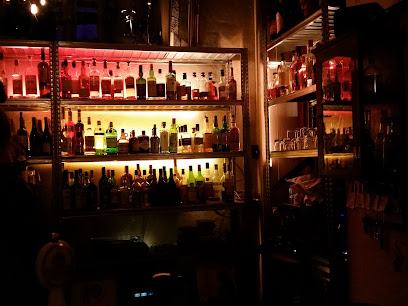
BrewDog Berlin Mitte
0.9 km
Discover the vibrant atmosphere and diverse craft beer selection at BrewDog Berlin Mitte, where every sip tells a story.
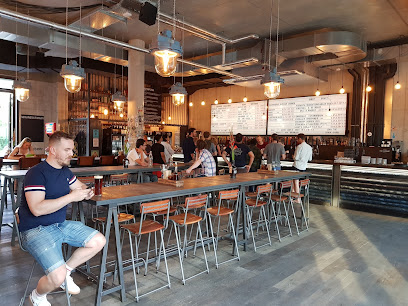
BonBon Bar Berlin
0.9 km
Discover the lively ambiance and eclectic cocktails at BonBon Bar, a must-visit for an unforgettable night out in Berlin's vibrant Mitte district.
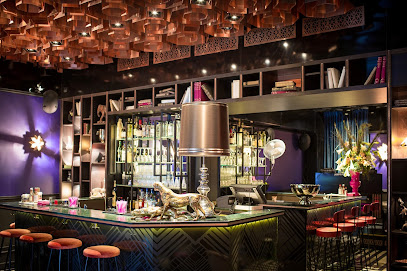
Windhorst
0.9 km
Experience Berlin's vibrant nightlife at Windhorst, an upscale cocktail bar serving exquisite drinks in a stylish atmosphere in the heart of Mitte.
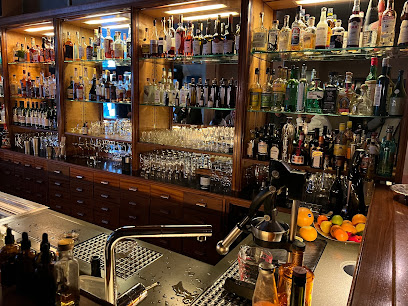
Sharlie Cheen Bar
1.0 km
Discover Sharlie Cheen Bar: A lively Berlin hotspot known for its innovative cocktails and vibrant nightlife experience in the heart of Mitte.
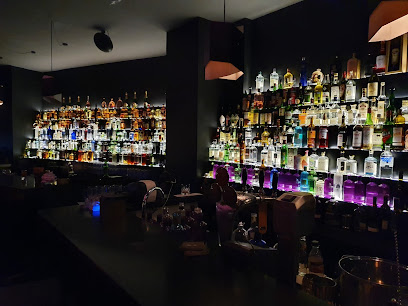
Mein Haus am See
1.0 km
Experience the vibrant fusion of bar, cafe, and nightlife at Mein Haus am See in Berlin's Mitte district, a perfect spot for relaxation and entertainment.
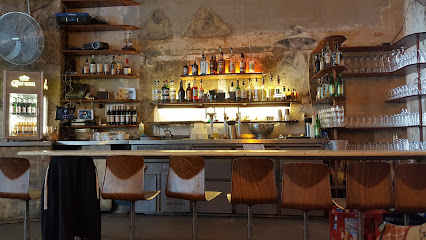
Buck and Breck
1.0 km
Discover Buck and Breck, a stylish cocktail bar in Berlin's Mitte district, where expertly crafted drinks and a cozy atmosphere await.
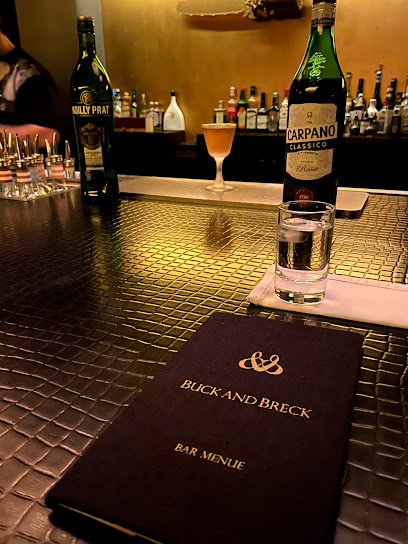
TheCoven Bar
1.0 km
Discover the allure of TheCoven Bar, a cocktail haven in the heart of Berlin's Mitte district, where innovative drinks meet enchanting ambiance.
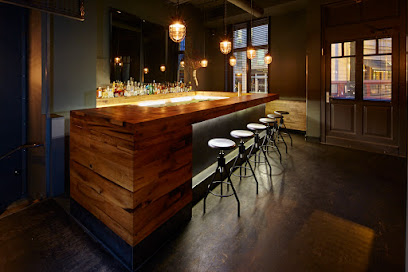
100 Gramm Bar
1.1 km
Discover 100 Gramm Bar in Berlin, the ultimate cocktail destination blending stylish ambiance with unique mixology in the heart of the city.
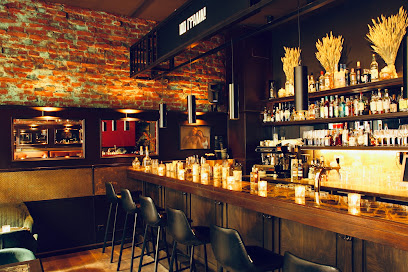
Berlin Icebar
1.3 km
Discover the magic of Berlin Icebar, where cocktails meet ice sculptures for a unique nightlife experience in the heart of the city.
